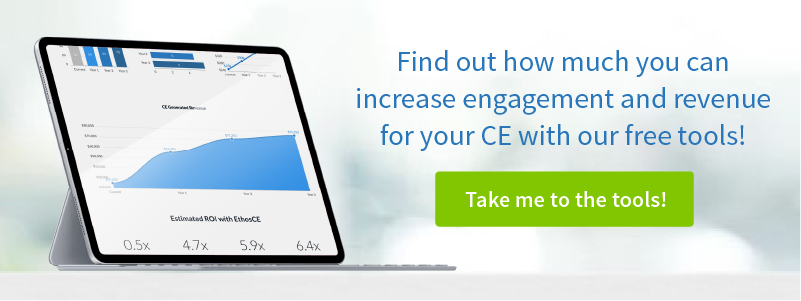EthosCE Mobile Automates University of Pennsylvania Office of Continuing Medical Education
Smartphone and open source Web technologies offer the continuing medical education (CME) community with a unique, cost effective model for automating and streamlining their CME enterprises. At the recent 2011 Annual Meeting of the Alliance for CME, I had the pleasure of presenting with our colleagues at the University of Pennsylvania School of Medicine Office of CME. Together with Mila Kostic, Zalman Agus, Rodman Campbell, we shared the results of our success integrating our EthosCE Learning Management System (LMS) with smartphone short-message service (SMS) technology to automate the Office of CME. In 2009, the Office of CME accredited 5,431 activities and generated 734,815 certificates. Our initial work focused on overhauling all RSS application, approval, and attendance tracking processes for grand rounds and case presentations. Mila Kostic described their previous manual RSS process as an “administrative nightmare resulting in a six-month backlog in data entry and certificate management.”
EthosCE is an ACCME PARS compliant, open-source learning management system for CME. DLC Solutions is currently deploying EthosCE to support all of the Office of CME’s live and enduring activities, assessments, certificates, learner data, and reporting within one centralize Web application. SMS is a technology that enables standards-compliant smartphones to share 160-character text messages and is the most popular smartphone feature currently in use today.
Please Note: Our feature article appears in the March/April issue of Medical Meetings Magazine and describe this initiative in much greater detail. In addition, I have posted our presentation slides below.
Our Process for Real-Time RSS Automation
As part of our work, we undertook the following steps:
- Mapped out the existing RSS application, peer-review, and approval process, which primarily consisted of PDF and PowerPoint documents being completed, reviewed, and routed via email.
- Identified all “touch points” and triggers that required administrative action and began to identify areas for automation.
- Upon concluding that the entire RSS application and approval process could be administered online, we programmed an automated workflow module within EthosCE LMS that encompassed the following steps:
- Each department’s Grand Rounds Coordinator completes and routes the Web-based RSS application and content to OCME for review and approval.
- Office of CME RSS Coordinator is notified by email and, upon login, is able to review the application and content in the RSS Dashboard.
- If required, the application and content is routed for peer-review.
- The peer-reviewer logs in to EthosCE, reviews the application and presentation content and completes an online form either recommending approval or rejection of the application with qualifying commentary.
- Office of CME RSS coordinator is notified by email of peer-review completion and recommendations. The RSS is either formally approved or rejected in the LMS with email notification going to the applying department’s grand rounds coordinator.
- Accreditation and SMS shortcode information for the newly approved RSS program is created in EthosCE LMS for the the department grand rounds coordinator.
- The SMS shortcode and instructions are then provided to the Grand Rounds attendees during the session. The attendees send a simple message to the EthosCE database, which records, validates, and confirms their attendance. Non-registered attendees are notified via a text messaging with instructions for creating an account within the EthosCE database. Once registered, their transcript for the event is marked as “attended.”
- In addition, a robust Attendance Administration interface was built to allow each department coordinator to manually record attendance for any learners who were for any reason either not able or not inclined to complete the SMS process
- DLC Solutions created an application programming interface (API) between EthosCE’s Attendance Module and Mobivity’s Drupal SMS Module (which we modified) to enable the acceptance, validation, and recording of RSS attendance to the learners’ official online CME transcript.
- Registered UPenn health care providers can login to EthosCE at anytime to review and download their CME transcript.
- Finally, an XML export process was built using the ACCME’s PARS specification—this process will allow for export of annual data from the OCME database, which can then be uploaded directly to the PARS web interface for ACCME annual reporting.
The Initial Results
The Office of CME and the departments it serves have realize tremendous benefits in reducing administrative costs, having one centralized database, and providing real-time updating of CME transcripts for their health care professionals. We conducted a pilot study on the use and efficacy of EthosCE Mobile for automating the Office of CME’s RSS in four departments between September and December 2010. The results are as follows:
- 736 Total Attendance Records
- 78.5% of attendance records recorded via SMS
- 75.5% of survey respondents reported using SMS (in-line with actual results mentioned above)
Approximately 20% of attendees did not participate initially in the system for the following reasons:
- 17.2% of non-SMS attendees reported having a smartphone, but did not enable or pay for a text messaging plan.
- 2.4% did not have a mobile smartphone.
- These attendees (averaging 3-5 people per session) were easily and quickly entered into the database by the coordinator.
Ease of Use
Respondents who used SMS for RSS attendance tracking rated their experience using a 5-point Likert scale (1=Poor, 5=Excellent) on the following domains:
- Ease of Use: 4.5 average rating
- Clarity of Instructions: 4.5 average rating
- Credit Monitoring: 4.6 average rating
Next Steps
We are very excited about the outcome of our work with the University of Pennsylvania and are looking forward to further automation of the Office of CME using EthosCE and other innovative technologies. We hope that this initiative will serve as a model for the CME community and encourage the broader use of open source Web and smartphone technologies.
 We're now part of the Cadmium product suite! Learn more
We're now part of the Cadmium product suite! Learn more 

